#23: Racing Ahead With China's High-Speed Rail Revolution
China's high-speed rail (HSR) network, the world's most extensive, spanning over 45,000 kilometers – that's enough to circle the Earth!
Imagine travelling from Delhi to Mumbai, a distance of over 1,300 kilometres, in just under 5 hours.
This isn't science fiction. It’s the reality of China's high-speed rail (HSR) network, the world's most extensive, spanning over 45,000 kilometers – that's enough to circle the Earth!
And, in this edition, we delve into the fascinating story of China's HSR revolution, its history, current dominance, key players, and the impact it has had both domestically and globally.
Strap in, because this isn’t just about getting from point A to B. It’s about reshaping economies and connecting millions at speeds that blur the landscape!
The Launch Pad: Origins in the Early 2000s
The genesis of China's high-speed rail ambitions can be traced back to the 1990s when the government recognized the need for faster and more efficient transportation to support its rapidly growing economy.
Initially, China relied on imported technology from countries like Japan and Germany. However, by the early 2000s, China had embarked on an ambitious plan to develop its own high-speed rail technology, leading to the birth of the China Railway High-speed (CRH) trains.
Thus came the first line, the Qinhuangdao-Shenyang High-Speed Railway, which was modest by today's standards but marked the beginning of a transformative era.
But, the turning point came around 2008 Beijing Olympics, with the opening of the Beijing-Tianjin Intercity Railway, China's first commercially operated high-speed line.
The 2010 Shanghai Expo further showcased China's HSR capabilities to the world, as millions of visitors travelled on the newly built Shanghai-Hangzhou high-speed line.
By end of 2010, the world-renowned Beijing-Shanghai High-Speed Railways was also inaugurated, cutting travel time from over 13 hours to just 5 hours, and linking major economic hubs with unprecedented efficiency.
And, this marked the beginning of a nationwide HSR construction boom, with new lines crisscrossing the country at an unprecedented pace.
Acceleration Phase
After this, China's HSR ambitions took a quantum leap.
..
A Global Benchmark
Today, China's HSR network is not just the longest but also the most extensively used, with services extending to more than 550 stations across the country.
In 2023, this network carried over 2.3 billion passengers, more than the rest of the world’s high-speed designated rail network combined!
This has significantly reduced travel times, boosted tourism, and spurred economic development along the HSR corridors.
The Powerhouses Behind the Tracks: Key Players in China's HSR Industry
This success story is a testament to the collaboration between government, industry, and academia.
The National Railway Administration (NRA), the government agency responsible for railway development, has played a crucial role in planning, funding, and regulating the HSR network.
There are other key stakeholders like:
China Railway Rolling Stock Corporation (CRRC): A state-owned giant, CRRC is the world's largest rolling stock manufacturer. Its cutting-edge technology and manufacturing capabilities have propelled China's HSR development, with its Fuxing bullet trains boasting a top speed of 350 km/h!
China Railway Signal & Communication Corporation (CRSC): CRSC is a leading provider of signalling and communication systems for railways. Its Automatic Train Protection (ATP) system is considered one of the most advanced in the world, ensuring the safety and efficiency of China's HSR network.
Beyond these giants, a network of research institutions, construction companies, and technology providers have contributed to the thriving HSR ecosystem in China, from research and development to manufacturing, construction, and operation.
These modern titans of the industry have also turned into exporters of technology to countries looking to develop their own HSR capabilities, including Turkey, Indonesia and Russia.
This global expansion is a key component of China's Belt and Road Initiative (BRI), a strategic vision aimed at enhancing connectivity and cooperation between China and the rest of the world.
HSR projects under the BRI are creating new trade routes, boosting economic development, and fostering cultural exchange.
And an all-new Indonesian line under the arrangement went live just a few months back.
India and the US: Contrasting Paths in High-Speed Rail Development
While China races ahead, India and the US are at different stages of their high-speed rail journeys.
India's first high-speed rail project, the Mumbai-Ahmedabad High-Speed Rail Corridor, is currently under construction with assistance from Japan.
The project aims to connect the two major cities with a travel time of just over 2 hours.
However, the project has faced numerous delays and cost overruns, highlighting the challenges of implementing HSR in a complex and diverse country like India.
Worse, there is no longer a firm deadline on when the project will be completed.
Meanwhile, in the US, high-speed rail development has been hindered by political gridlock, funding constraints, and geographical challenges.
While several projects are in various stages of planning, that’s majorly about it here.
Economic and Societal Shifts
Coming back to China, tens of cities that were once considered peripheral have been woven into the urban fabric of major metropolises, spurring regional economic integration.
To these, the HSR network has been a catalyst for urban development, significantly impacting real estate, labour markets, and even tourism within China.
And it continues to push the boundaries of HSR innovation, actively researching and developing even faster trains, with speeds exceeding 600 km/h.
The government is also exploring the potential of maglev technology, which could further revolutionize high-speed transportation.
It is also investing in renewable energy sources to power the HSR network, aiming to reduce carbon emissions and costs!
Challenges: Speed Bumps Ahead
Despite the successes, challenges such as financial sustainability and environmental impacts loom large.
The immense cost of constructing and maintaining such an extensive network poses questions about long-term financial viability, especially in less populated areas.
But, nonetheless, China's high-speed rail revolution is a testament to the nation's unwavering commitment to progress and innovation.
It's a story of how a country can transform its transportation landscape in a matter of years, setting new benchmarks for speed, efficiency, and connectivity.
Time to wrap!
As we continue to decode the dragon, I’ll keep you abreast of the latest developments in China's high-speed rail industry.
I’ll delve deeper into the technological advancements, policy shifts, and global impact of this remarkable journey, providing you with valuable insights and analysis along the way.




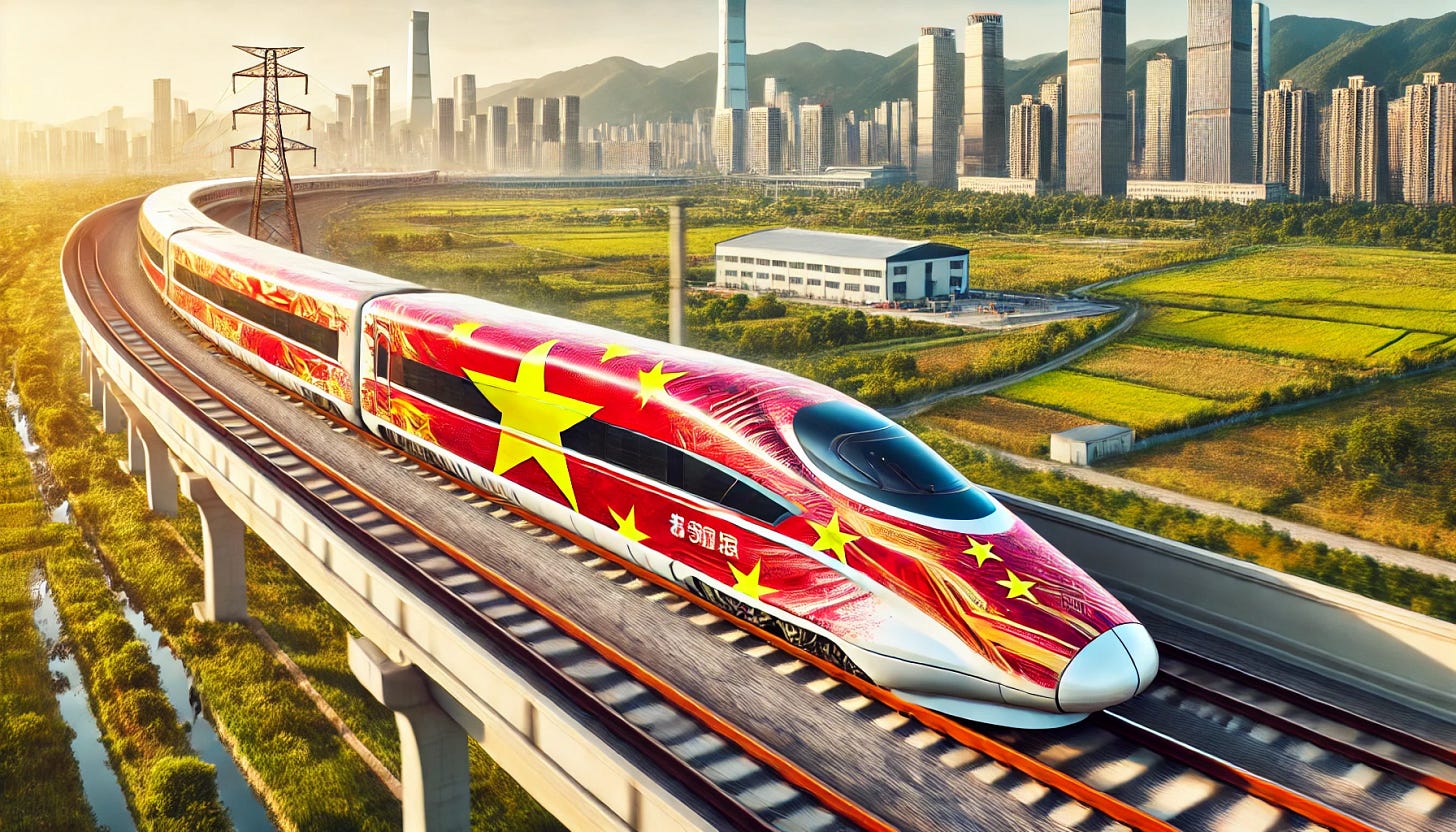
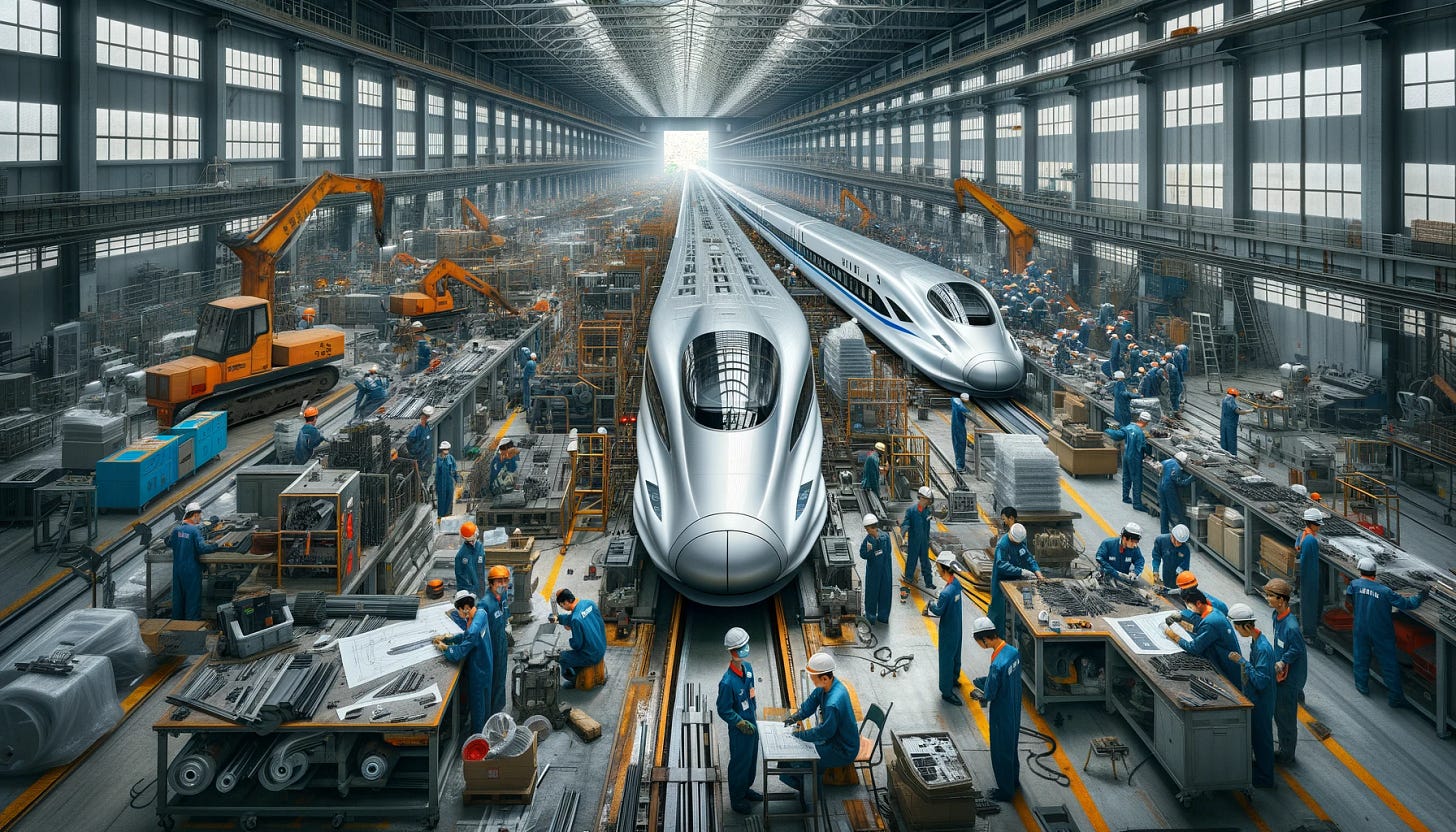
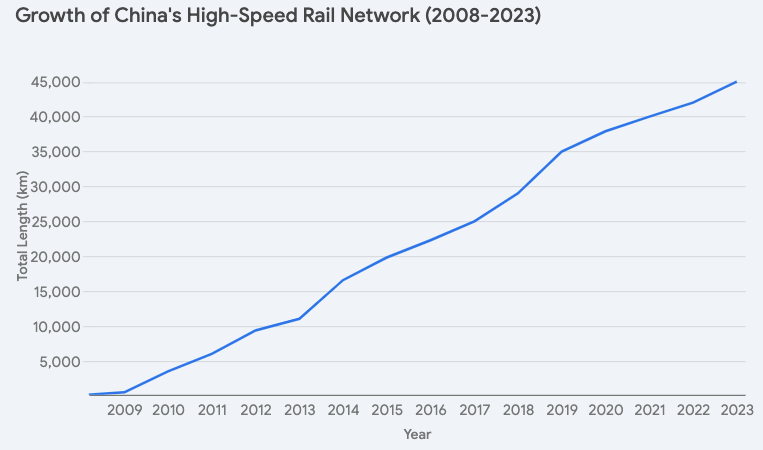

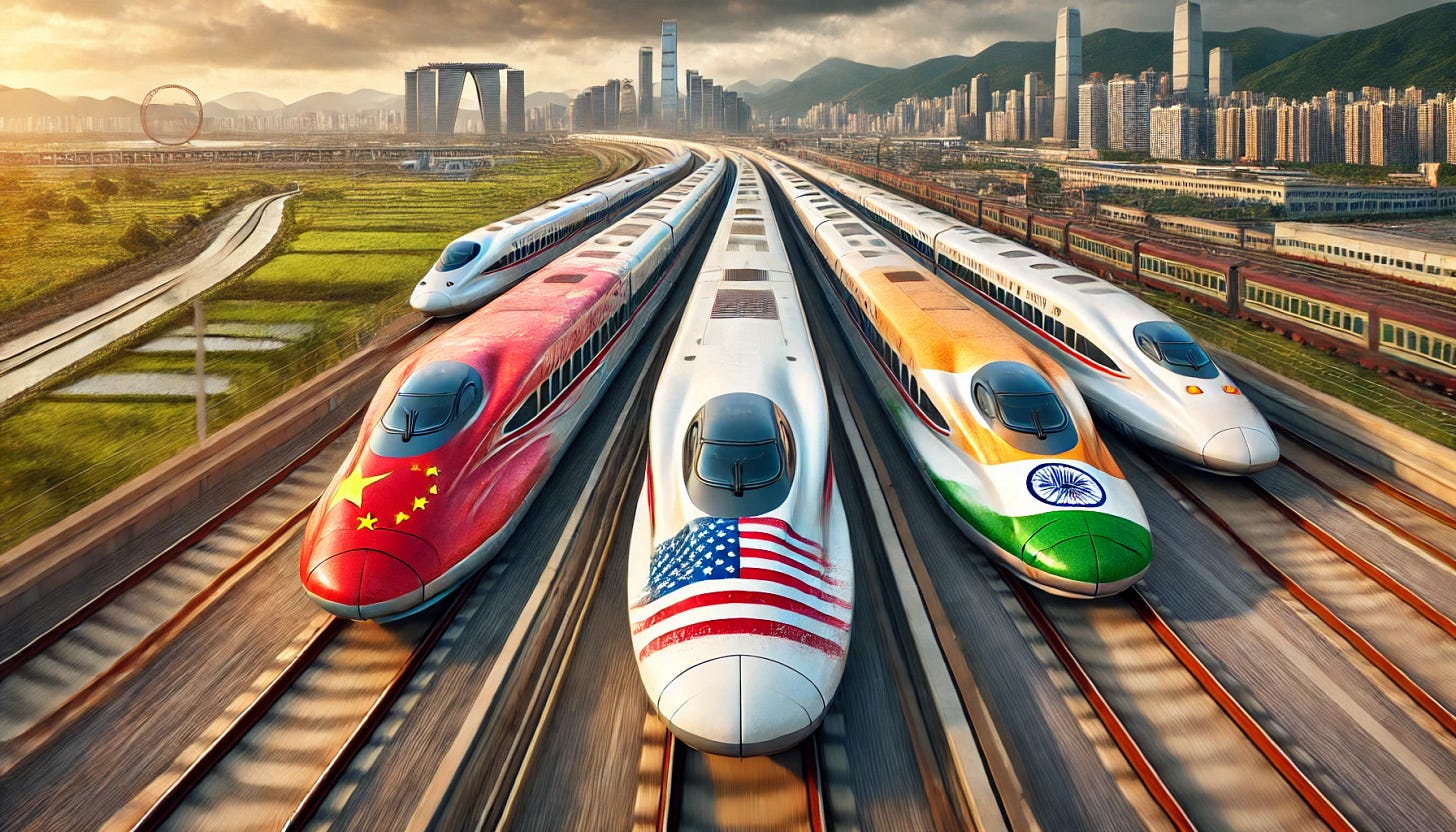

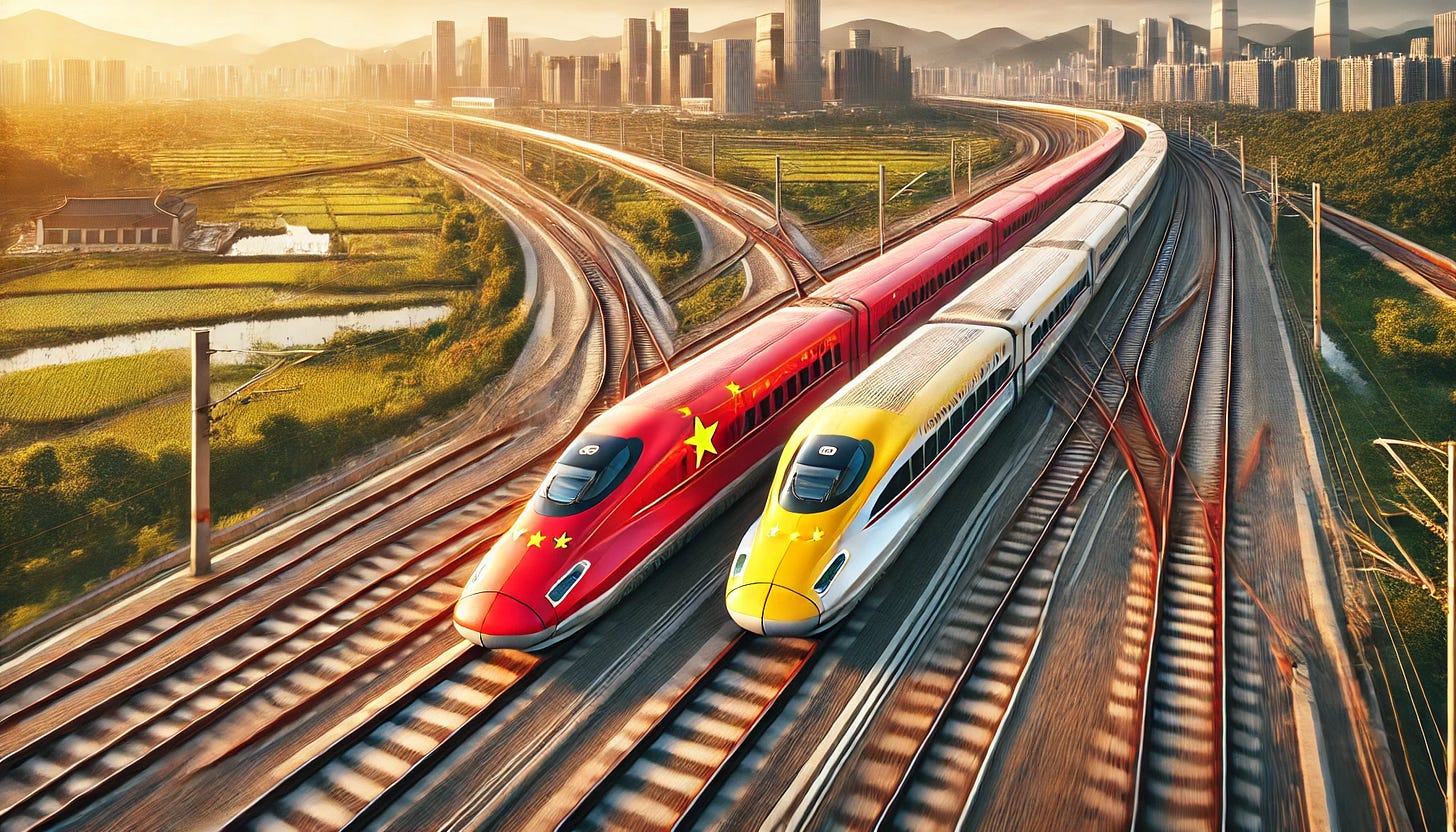
Very nice but India now focus on Hyperloop.